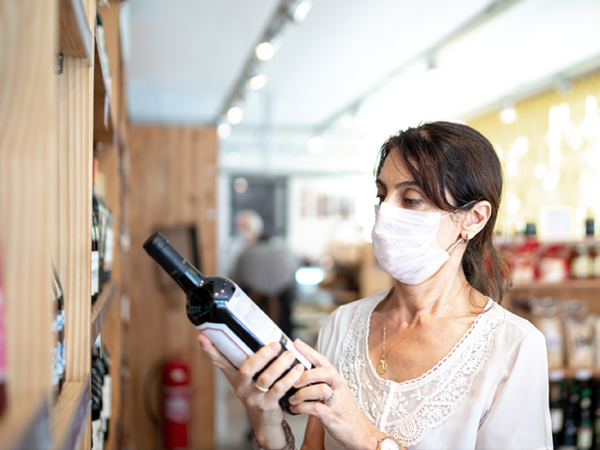
As the impact of the ongoing pandemic on the global beverage alcohol market continues to come into focus, IWSR has identified six key macro trends that are driving and shaping the industry: Digital and Ecommerce; Sophistication and Premiumisation; Evolving Traditions; External Pressures; Health and Ethical Consumption; and Social Drinking Experiences.
As part of the newly released IWSR Global Trends 2020 Report, IWSR analysts assess the impact that Covid-19 will have on these macro trends in the short, medium and long term, and across key global markets. Here, we highlight three of the macro trends:
Sophistication and Premiumisation
The search for authenticity and status, enabled by consumer knowledge and spending power:
- Premium-and-above spirits are forecast to increase their global volume market share to 13% by 2024 as consumers continue to favour quality over quantity, including cocktails and high-end sipping spirits.
- By value, China is the world’s largest premium-and-above market for wine and spirits, although, by volume, the US trails it closely.
- In both countries, premium-and-above brands are forecast to increase their volume market share by approximately one percentage point between 2019 and 2024, as the premiumisation trend continues to influence market developments.
Evolving Traditions
Generational shifts in consumer behaviour encouraged by globalisation or emerging as a reaction against it:
- Local products and experiences – accelerated by travel restrictions and closed borders during the pandemic – will continue to gain popularity as consumers rally behind symbolic and job-sustaining producers.
- Adapting to bar and restaurant outdoor dining restrictions and closures has forced consumers – especially among younger LDA generations – to form new drinking habits that will likely persist into the future, with portable/convenient beverages such as canned wine and RTDs well-poised for this.
- Spirits categories that are expected to continue to ride the globalisation trend include premium-and-above tequila (which has grown 15% year-on-year between 2015-2019), and spirit aperitifs (which after the Covid-19 slump, due to on-trade closures, should return to healthy growth by 2021, with volumes increasing by almost 16% from 2019 levels).
Health and Ethical Consumption
Increasing focus on personal health and wellness, and the impact of choices on the environment and society at large:
- Health-conscious drinkers generally adopt a policy of moderation, cutting back in volume or reducing occasions. These consumers are likely to trade up to a higher-quality drink or one they perceive as healthier when they do choose to drink. Regular drinking occasions are also changing, thanks to the growing profile of better low- and no-alcohol alternatives.
- In the top countries for low- and no-alcohol products, no-alcohol beer is set to grow its share of the beer category to 4.45% by 2024, as sober and moderating consumers embrace newly improved products across a wide range of occasions.
- The top organic wine markets as of 2019 are Germany, France, the UK, the US, Sweden and Japan. Here and elsewhere, broad consumer-and state-led shifts toward health and/or sustainability are likely to continue in the wake of the Covid-19 pandemic. This will have implications for the whole beverage alcohol industry, from production and packaging to distribution and administration.
To learn more about the impact of Covid-19 on the 6 key macro trends driving the industry, we recommend reading the IWSR Global Trends 2020 Report. The report also provides global category outlooks and future trends for wine, beer, spirits, cider, and RTDs for over 20 key global markets, as well as case studies and specific recommendations on how brands and companies can navigate the changing beverage alcohol landscape post-Covid-19.
You may also be interested in reading:
How is alcohol legislation changing in the wake of the ecommerce boom?
Why will beer prove resilient in the aftermath of Covid-19?
Will current shifts in consumer behaviour permanently disrupt the beverage alcohol industry?
Category
Market
- Beer
- Brandy
- Cider
- Gin
- Irish Whiskey
- Low-/No-Alcohol
- Mixed Drinks
- RTDs
- Rum
- Scotch
- Spirits
- Tequila
- US Whiskey
- Vodka
- Whisky
- Wine


